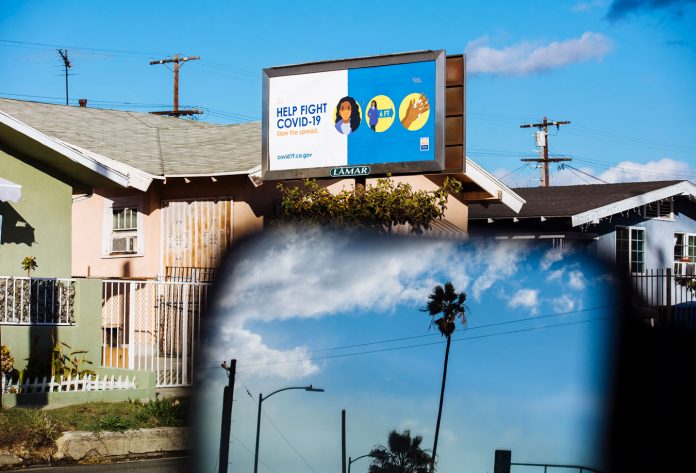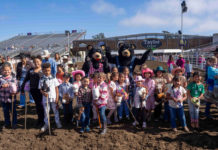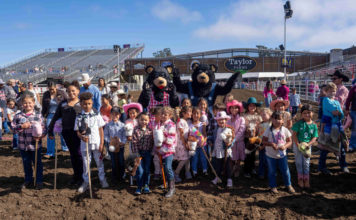
CALIFORNIA — Coronavirus cases have continued to recede. President Joe Biden said that there will be enough vaccine available for all U.S. adults by the end of May, sooner than previously expected, because of a deal with Johnson & Johnson to boost supply. More than 9 million shots have already been administered in California.
This time, it seems, the reopening of California will be different. Gradual, yes — California, as Gov. Gavin Newsom pointedly noted, isn’t Texas — but lasting. Really.
At least, that’s how officials across the state are framing the progress in the past couple of days.
On Tuesday, state public health officials said that seven counties were moving from the state’s most stringent purple tier to the second most restrictive red tier. It was the most significant easing of restrictions since state leaders abruptly announced that they were lifting stay-at-home orders meant as a kind of “emergency brake” to halt what spiraled into the state’s deadliest surge.
“The fact that we’re moving into new tiers, the fact that we’ve provided billions of dollars in relief checks, speaks for itself,” Newsom, speaking in Palo Alto, said Tuesday at another news conference aimed at drumming up excitement for a long-negotiated deal to bring students back to classrooms after a year of distance learning. (He said later that he planned to sign the bill Friday.)
“Come August, September, we’ll be in a position to safely reopen not only our schools but the vast majority of business sectors as well,” he said.
San Francisco’s mayor, London Breed, told residents in a news conference Tuesday to get in the habit of putting their masks back on as they move about indoor restaurants.
“Because, ultimately, we’re in the red right now,” she said, “but in just a few weeks, we’ll probably, most likely be in the orange.”
Even Barbara Ferrer, director of public health for Los Angeles County — known for her dire warnings as Los Angeles became the epicenter of the winter crisis — struck a somewhat optimistic tone Tuesday in her office’s update.
“LA County is very close to meeting the metric thresholds for the less restrictive red tier,” she said in a statement.
But perhaps you’ve gotten a little fuzzy about what this all means. Here are the answers to your questions:
Which counties are in the red tier now? And how can I find out which tier my county falls under?
There are 16 counties now in the red tier: Del Norte, Modoc, Humboldt, Trinity, Shasta, Lassen, Plumas, Marin, Napa, Yolo, El Dorado, San Francisco, San Mateo, Santa Clara, Mariposa and San Luis Obispo.
Two counties are in the even less restrictive orange tier — Sierra and Alpine — and the rest, including most of the state’s most populous counties, are still in the purple tier, as of Tuesday.
What is allowed in the red tier?
The most significant difference between the purple and red tiers is that in the red tier, restaurants, museums and movie theaters can reopen indoors, at 25% capacity or 100 people — whichever is fewer. Gyms can reopen indoors at 10% capacity. (In the purple tier, all of those are allowed to operate outdoors only.)
Bars and breweries — businesses that serve alcohol but not food — must remain closed. In both the purple and red tiers, though, wineries can operate outdoors only.
In the purple tier, stores and shopping malls could be open indoors at 25% capacity; in the red tier, that can increase to 50%.
In the red tier, indoor gatherings are strongly discouraged but allowed, with a maximum of three households.
And masks are still required when you’re not eating or drinking.
What about in the orange and yellow tiers?
Many of the aforementioned places can open indoors at higher capacity, including restaurants, which can be open at half capacity. In the orange tier, bars can reopen outdoors, and smaller amusement parks can also open at 25% capacity.
How quickly could even more restrictions be lifted?
Counties fall into different tiers based on their average numbers of new cases per 100,000 residents and their test positivity rates, with some adjustments, so new cases must continue to fall. Officials in each county can opt to keep in place stricter rules than the state allows, as Los Angeles County has done in the past, but given the continuing vaccine rollout — confusing though it may be — that seems less likely now.
While just about 13% of the state’s population lives in a county that’s been able to move out of the purple tier, Newsom on Monday hinted that the balance could shift significantly “in the next few weeks.” He said the state was monitoring roughly 17 counties that could have restrictions lifted as early as next week.
Copyright 2021 The New York Times Company














